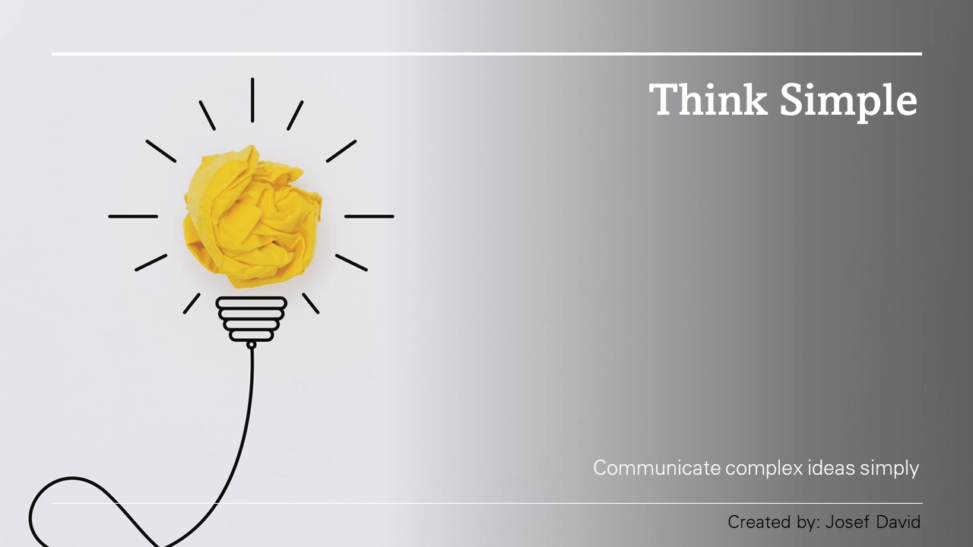Introduction:
The concept of “Think Simple” is a powerful mantra that encourages us to shift our perspective from a consumerist lifestyle to a more sustainable one.
This paradigm shift is not only beneficial for our personal well-being but also crucial for the health of our planet.
The year 2024 could be a pivotal point in this transition, as more and more people are becoming aware of the importance of sustainability and are willing to take concrete actions towards it. In this context,
let’s explore 30 actions that can help us transition from a consumer lifestyle to a sustainability lifestyle.

1. Reduce, Reuse, Recycle
This is the golden rule of sustainability. By reducing our consumption, reusing what we can, and recycling what we can’t, we can significantly decrease our environmental footprint.
2. Buy Less
The less we buy, the less waste we generate. It’s as simple as that.
3. Choose Quality over Quantity
Instead of buying cheap items that break easily and need to be replaced often, invest in high-quality items that last longer
4. Support Local Businesses
Local businesses often have smaller carbon footprints than large corporations. Plus, supporting them helps boost your local economy.
5. Eat Less Meat
The meat industry is one of the biggest contributors to greenhouse gas emissions. By eating less meat, you can help reduce these emissions.
6. Grow Your Own Food
Growing your own food not only reduces your carbon footprint but also ensures you’re eating fresh, healthy produce.
7. Use Public Transportation
Public transportation is much more energy-efficient than individual cars.
8. Bike and Walk When Possible
Biking or walking not only reduces your carbon footprint but also improves your health.
9. Use Energy Efficient Appliances
Energy-efficient appliances use less electricity and thus reduce your carbon footprint.
10. Switch to Renewable Energy
If possible, switch to renewable energy sources like solar or wind power.
11. Save Water
Simple actions like turning off the tap while brushing your teeth can save a lot of water.
12. Compost
Composting your organic waste reduces the amount of waste that ends up in landfills and provides nutrient-rich soil for your garden.
13. Plant Trees
Trees absorb CO2, one of the main greenhouse gases, thus helping to combat climate change.
14. Educate Yourself and Others
The more people know about sustainability, the more likely they are to take action.
15. Vote with Your Wallet
Support companies that prioritize sustainability.
16. Avoid Single-Use Plastics
Single-use plastics are a major source of pollution. Use reusable alternatives whenever possible.
17. Repair instead of Replace
If something breaks, try to repair it before buying a new one.
18. Donate What You Don’t Need
Instead of throwing away items you no longer need, donate them to someone who can use them.
19. Buy Secondhand
Buying secondhand items reduces demand for new items and thus reduces waste.
20, Use Less Paper
Go digital whenever possible to reduce paper waste.
21. Take Shorter Showers
This not only saves water but also saves energy used to heat the water.
22. Turn Off The Lights When Not in Use
This is a simple way to save electricity.
23. Unplug Electronics When Not in Use
Many electronics use power even when they’re turned off. Unplugging them can save a lot of electricity.
24. Carpool or Share Rides
Sharing rides reduces the number of cars on the road and thus reduces emissions.
25. Choose Eco-Friendly Products
From cleaning products to clothing, choose items that are made sustainably and ethically.
26. Invest in Green Technology
Green technology, like solar panels or electric cars, can significantly reduce your carbon footprint.
27. Advocate for Sustainable Policies
Use your voice to advocate for policies that promote sustainability.
28, Offset Your Carbon Emissions
If you can’t reduce your emissions any further, consider offsetting them by investing in projects that reduce emissions elsewhere
29. Practice Mindful Consumption
Be aware of what you’re buying and why. This can help you make more sustainable choices.
30. Lead by Example
Show others that a sustainable lifestyle is not only possible but also fulfilling and rewarding.
Conclusion:
In conclusion, transitioning from a consumer lifestyle to a sustainability lifestyle is not only necessary for the health of our planet but also beneficial for our personal well-being. It’s about making conscious choices and being mindful of the impact of our actions.
The 30 actions listed above are just a starting point. There are many more ways to live sustainably, and every little bit helps.
Remember, the goal is progress, not perfection. So let’s start today and make 2024 the year of sustainability!





